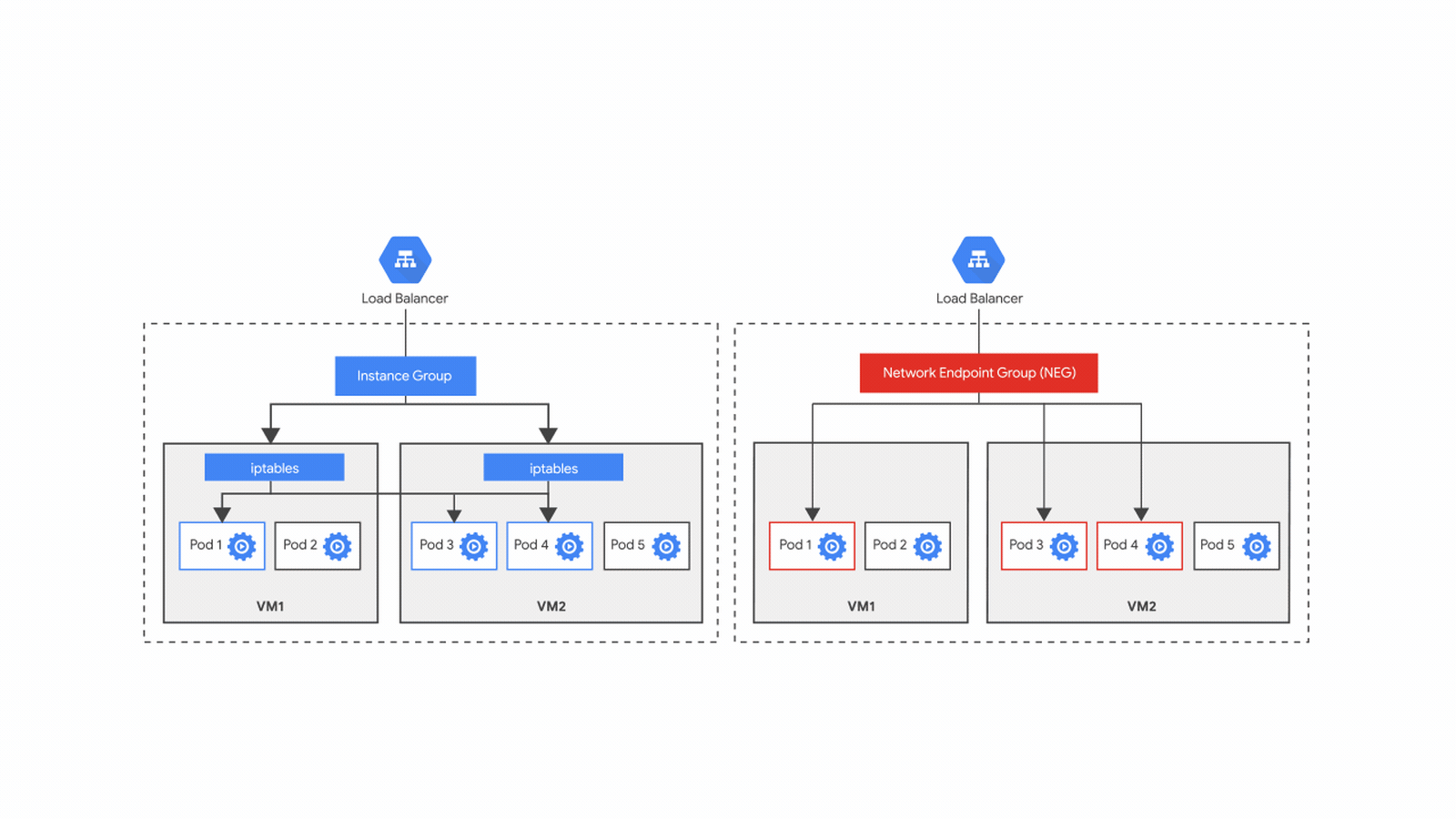Last year, we announced container-native load balancing, a feature that allows you to create services using network endpoint groups (NEGs) so that requests to your service get load balanced directly to the containers serving the requests. Since announcing the beta, we have worked hard to improve the performance, scalability and user experience of container-native load balancing and are excited to announce that it is now generally available.Container-native load balancing removes the second hop between virtual machines running containers in your Google Kubernetes Engine (GKE) cluster and the containers serving the requests, improving efficiency, traffic visibility and container support for advanced load balancer capabilities. The NEG abstraction layer that enables this container-native load balancing is integrated with the Kubernetes Ingress controller running on Google Cloud Platform (GCP). If you have a multi-tiered deployment where you want to expose one or more services to the internet using GKE, you can also create an Ingress object, which provisions an HTTP(S) load balancer and allows you to configure path-based or host-based routing to your backend services.Figure 1. Ingress support with instance groups vs. with network endpoint groups.Improvements in container-native load balancingThanks to your feedback during the beta period, we’ve made several improvements to container-native load balancing with NEGs. In addition to having several advantages over the previous approach (based on IPTables), container-native load balancing now also includes:Latency improvements: The latency of scaling down your load-balanced application to zero pod backends and then subsequently scaling back up is now faster by over 90%. This significantly improves response times for low-traffic services, which can now quickly scale back up from zero pods when there’s traffic. Improved Kubernetes integration: Using the Kubernetes pod readiness gate feature, a load-balancer backend pod is considered ‘Ready’ once the Load balancer health check for the pod is successful and the pod is healthy. This ensures that rolling updates will proceed only after the pods are ready and fully configured to serve traffic. Now, you can manage the load balancer and backend pods with native Kubernetes APIs without injecting any unnecessary latency. Standalone NEGs (beta): You can now manage your own load balancer (without having to create an HTTP/S based Ingress on GKE) using standalone NEGs, allowing you to configure and manage several flavors of Google Cloud Load Balancing. These include TCP proxy or SSL proxy based load balancing for external traffic, HTTP(S) based load balancing for internal traffic (beta) and global load balancing using Traffic Director for internal traffic. You can also create a load balancer with hybrid backends (GKE pods and Compute Engine VMs) or a load balancer with backends spread across multiple GKE clusters.Getting started with container-native load balancingYou can use container-native load balancing in several scenarios. For example, you can create an Ingress using NEGs with VPC-native GKE clusters created using Alias IPs. This provides native support for pod IP routing and enables advertising prefixes. Check out how to create an Ingress using container native load balancing. Then, drop us a line about how you use NEGs, and other networking features you’d like to see on GCP.
Quelle: Google Cloud Platform

Published by